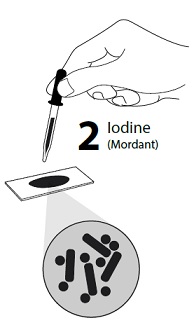Study Microbiology
 Learn about the living world beyond what can be seen with the human eye.
Learn about the living world beyond what can be seen with the human eye.
From bacteria and viruses to fungi and protazoa, there are more living organisms around us than what most people might imagine. These tiny living organisms affect us in so many ways though. They are responsible for disease, they aid our digestion of food, they eliminate bad chemicals from the environment and much more.
The study of microbiology is at the forefront of many of the technological developments in our modern world. Understanding microbiology better can give you an edge in any of the applied life sciences, from farming and horticulture to medicine and environmental management.
Course Content
Nine lessons:
- Scope and Nature of Microbiology
- Microscopes
- Cultures
- Microbial Taxonomy
- Bacteria
- Viruses
- Other Microbes - Protists, Fungi, Helminths
- Immunology
- Applied Microbiology
Introducing Bacteria
Bacteria are one of the smallest living things, being just single-celled organisms (though they are slightly larger than viruses). They enter plants through wounds or natural openings such as stomata (tiny epidermal pores on the surface of leaves or stem) or water pores (hydathodes). Most cannot break directly through the cell walls of the 'surface' of a plant though some, e.g. potato scab, can enter through thin tuber walls. Some penetrate through root hairs e.g. root nodule bacteria of legumes. Others enter through specialised cells that produce nectar during flowering, e.g. apple, pear, and quince blight. Bacterial invasion can cause rots, blights, spots, galls, scabs and other symptoms (note: fungi can also cause many of these).
Although bacteria often join together to form a mass of cells, each one is independent of the others. They multiply by cell division and this can occur at a rapid rate with cell division occurring several times in an hour under favourable conditions. Due to their relatively large surface area and the large number of cells produced they are able to attack plant tissue rapidly if the conditions are right.
Bacteria which feed on dead plant (or animal) tissue are known as 'saprophytes'. Disease causing bacteria are known as ‘parasites’. Many bacteria can live as both parasites and saprophytes. They will often survive on dead plant material until a new plant or crop becomes available, e.g. they can over-winter on dead tissue.
Some species of pathogenic bacteria have external hair-like appendages known as 'flagella' which can be vibrated to enable them to move small distances in water and plant juices. Those without flagella can still be relocated through the splashing of water or wind-blown droplets, for instance. They can also be spread by movement of soil from one location to another.
Once bacteria have entered the plant tissue they may move about in the plant juices within or between cells, or they can be transported within the sap stream. Usually bacteria are found between the cells at the onset of disease but as the cell walls become damaged they are able to penetrate the cells.
The symptoms produced by a plant in response to bacterial invasion are often indicative of the disease e.g. galls, wilts, spots etc. These symptoms and their effects are similar to those of fungal infections. Galls normally only affect one part of the plant, wilts affect the whole plant, and rots may affect one part or the whole plant. Bacterial infections are very difficult to treat because very few chemicals or fungicides can control them.
Who can Benefit from this Course

- Students of biology, health or veterinary sciences, agriculture or environmental science
- Technologists or Scientists
- Laboratory Assistants and Technicians
- Health Support Professionals
- Veterinary Assistants
- Anyone working in food handling or processing
- Environmental Assessors
- Environmental Managers
- Horticulture Professionals
- Farmers
- Agriculture Professionals
- Soil Scientists
- Soil Managers
- Pest Controllers
- School teachers, college lecturers
- and many others.